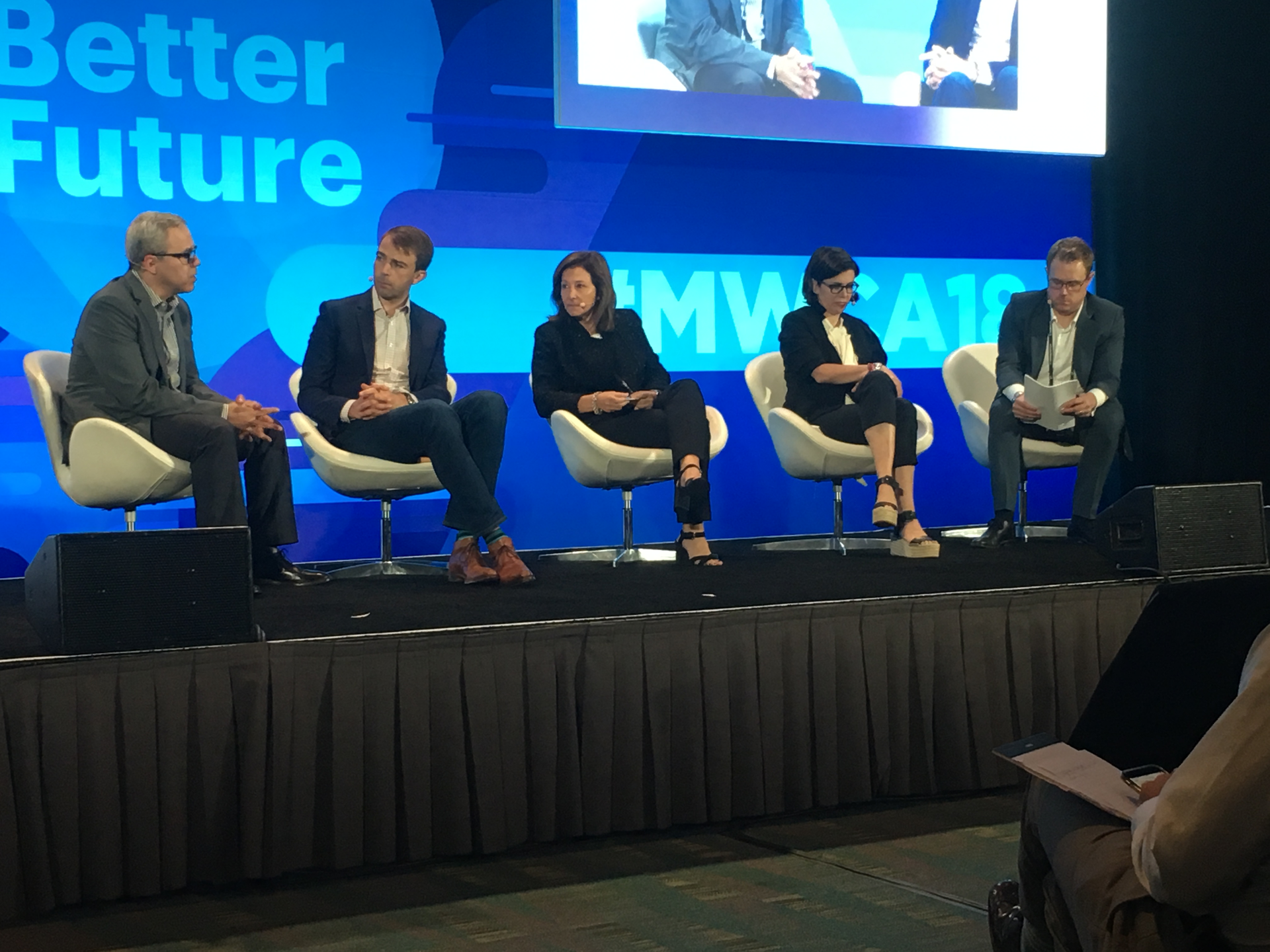The 5G hype machine was cranked up high last week at the Mobile World Congress Americas conference in Los Angeles – luckily some marketing executives were on hand to forecast what the coming high-speed cellular service will mean for promotion, relationship building and innovation.
In a big nutshell, the latest and greatest technology isn’t going to help marketers if they forget there are live human beings at the end of those broadband connections, usually with multiple devices. 5G takes social marketing, and platform-specific content, and accelerates their impact in the marketing equation.
“You’re going to see the most success if you focus on the audience experience, not as dollar signs but as co-creators that you’re trying to capture information from,” Jesse Redniss, EVP of data strategy and product innovation at Turner Broadcasting told the MWCA audience. “If they’re just eyeballs, they’re not going to be loyal to you.”
Multiple carriers are expected to introduce 5G cellular services next year, though Verizon said its prototype 5G Home service will go live in four cities Oct. 1. While Verizon claims throughput ranging from 300 megabits per second to 1 gigabit per second, more mature 5G offerings will deliver 490 Mbps to 1.4 Gbps; the 5G standard envisions throughput as fast as 20 Gbps.
In addition to screaming fast transmission, 5G also promises low latency (also known as delay); low to non-existent latency is considered essential for video, whether it’s Netflix or FaceTime. And with its efficient use of radio frequencies, 5G is also expected to cost less, since more users and devices can be accommodated with the same amount of radio spectrum. Verizon’s introductory service, for example, is expected to cost $50 a month.
Darcy Antonellis, CEO of content aggregator Vubiquity (and a division of Amdocs), said that 5G sets high expectations, both for end-users and marketers. She cited three “pillars” that must co-exist if a broadband mobile marketing environment is really going to thrive. These include a robust network or distribution backbone, as well as improved insights and analytics, which need to get more granular and offer a 360-degree view of individual customers. The final pillar, according to Antonellis, is monetization. “We need to be able to understand how we should best engage with you and find the best times to promote something to you and to give you additional options and offers,” she added.
As both a highly recognizable brand and aggressive user of emerging technology, National Geographic sees 5G as another means to serve the company’s mission of saving planet earth. NG counts 760 million subscribers, while it reaches 1.8 billion globally across all its platforms, according to Brendan Ripp, EVP of National Geographic and Fox Networks Group. “We’ve invested in mobile, social and storytelling. The secret sauce is content, scale and purpose,” he told the MWCA audience while the brand’s highlights reel played behind him.
“Lots of brands have the content and scale but don’t have the purpose, this mission to save planet earth,” Ripp explained. With that purpose comes highly compelling content – like its Planet Earth series, the saga of a young woman’s facial transplant, or Will Smith live chatting with astronauts aboard the International Space Station – which in turn drives engagement across multiple platforms. “Modern thought leadership is caring about the planet and topics that interest you like race, gender evolution and other big social issues,” Ripp said. Mobile and social, he added, “are kerosene to the fire.”
Ronalee Zarate-Bayani, CMO of the National Football League’s Los Angeles Rams, is up against a different problem. TV ratings across the league continue to edge downward, and yet the passion for a team or a sport like football continues to thrive. “How do we ensure that energy matches what consumers want and expect? We’re looking at how you provide a parallel experience that amplifies the total experience,” she said, whether it’s a live game at the Los Angeles Coliseum, tracked on the team app or watched on Apple TV at home.
“We have to meet fans where they are – and that’s mobile. Mobile is constantly on our own minds,” Zarate-Bayani explained. “And [customer] data is disparate, so we’re trying to triangulate and create an experience,” based on that data.
GDPR and Facebook privacy issues notwithstanding, Zarate-Bayani said Rams fans give up personal data relatively easily – with one basic caveat. “The reality is people are willing to give up their data if it’s transparent and they get value from it. What they don’t like is when it’s happening behind the scenes,” she told the MWCA audience. But all organizations are moving toward more transparency because they have to; with the advent of 5G, more data is coming and that’s only going to make it harder for most brands.
“Smart brands will get ahead of the curve and figure out how to harness that data,” Zarate-Bayani added.







